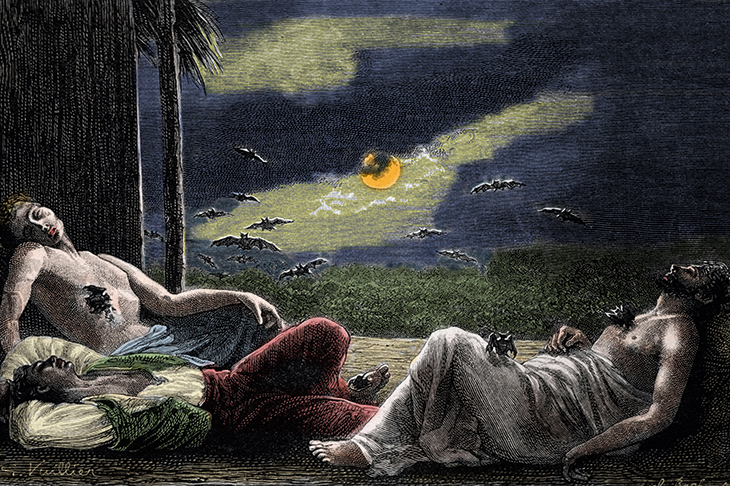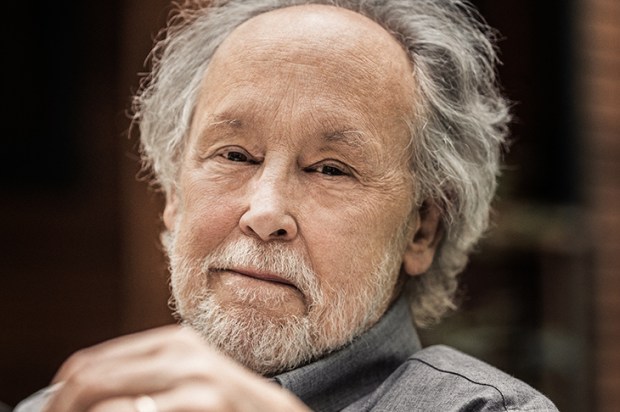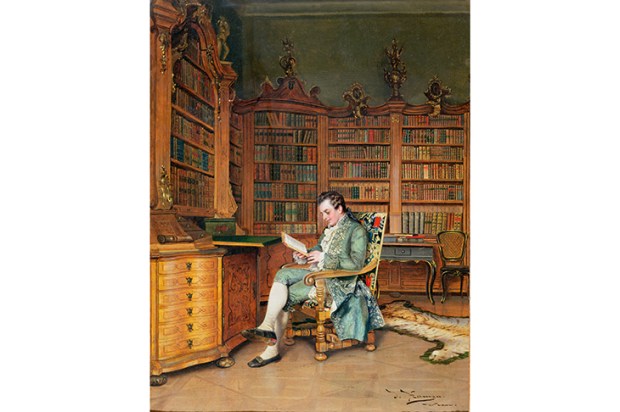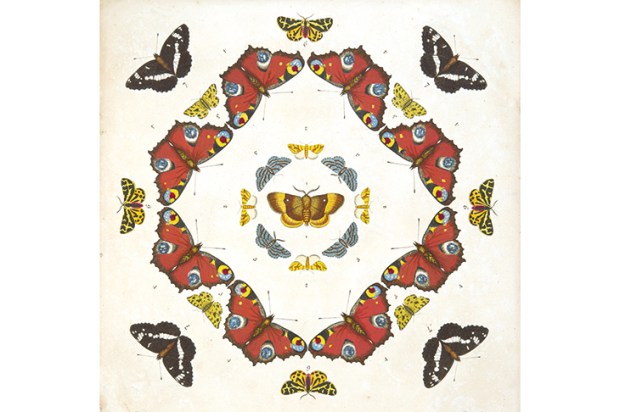When it was recently announced that Robert Pattinson, who played the vampire Edward Cullen in the Twilight films, had secured the role of Batman, a Twitter user wrote: ‘Worst vampire ever. Took him 11 years to turn into a bat.’ This is probably Twitter’s second greatest bat joke, beaten only by @LRBbookshop’s ‘I reckon Nagel actually knows full well what it’s like to be a bat’.
It is in the nature of social media to carp, though, and in that spirit I point out that, while Twilight’s Edward didn’t become a bat (his main uncanny powers beside immortality seemed to be great cheekbones and a Mr Darcy-ish froideur), Batman isn’t really a bat either.
Shapeshifting is usually thought of as an attribute of vampires, even if not — as it is for werewolves, including those in the Twilight books and films — the essential characteristic. Dracula, in Bram Stoker’s narrative, is directly described as turning himself into a large dog and, later, a vapour, but his bat transformations are either implied or asserted as one of his powers by other characters.
According to Richard Sugg, however, real vampires not only didn’t necessarily shapeshift as bats, but need not have had any wariness of garlic, crucifixes, sunlight, looking glasses or any need to feed on the living. Some of them, he argues, needn’t even be dead, though the examples he gives often end up that way when hostile locals (usually, in his book, from the area around Greece and the Balkans) decide to ensure that the job of disposing of them is done properly.
The obvious complaint is that Sugg is trying to have his O+ and drink it. He begins with: ‘In many ways the revenant… is almost synonymous with “vampire” ’, and then tries to define a vampire as ‘an undead human being that feeds on life’. That includes harmless living people eating fruit and nuts.
You can see what he’s trying to do, because he wants to cite many interesting cases from the history of those thought ‘undead’, which — given some theories of the soul — not infrequently included the living, the temporarily comatose and those who suffer from the psychological phenomenon of night terrors. The last, which Sugg deals with at some length, is, however, not confined to fear of vampires, but has been associated with demonic possession, alien abduction syndrome (the ‘Greys’) and the myth of the succubus — present, of course, in Stoker’s book.
Sugg diligently covers Stoker’s predecessors and gives a great many instances culled from literature (footnoted) and newspaper accounts (usually not). If this book recounts entertaining examples from history, though, it can’t be said to be a critical historical work, even when the author offers plausible psychological or medical theories for puzzling cases.
It’s more a greatest hits of oddities from literature, folklore and history, akin to those in old magazine partworks such as The Unexplained, not all of them awfully relevant to vampires. Still, Sugg is presumably sounder on these subjects than he is on geography. He admits in his introduction that he didn’t go to Transylvania to research the book, but he still ought to know that Belgrade is not the capital of Romania, a point he relies on when using a newspaper story of a man escaping from a coffin there in 1888 as a basis for Romanian lore on vampires.
John B. Kachuba’s Shapeshifters is similarly hit-and-miss. Like Sugg, he delivers a series of interesting (if you’re interested in this sort of thing) accounts of transformations of human to animal; something that appears — judging by the kitsune, the Naga, the selkie, the tengu, the yawkyawks and the sasabonsam, just a few of Kachuba’s examples — to be a widespread myth. Kachuba muses that this theme — beginning with Lycaon, the king of Arcadia whom Zeus changed into a wolf — may fulfil a universal desire to be what we are not. He concludes that it’s ‘no surprise that shapeshifters should be so popular’, citing, of course, Twilight and Harry Potter.
He, too, diligently covers the ground, though for every popular culture example he cites, misses one, or six. From A Song of Ice and Fire (which you may think of as Game of Thrones) for instance, he lists Bran and the wargs, but not the Faceless Men, whose whole bloody point is that they can resemble anyone, like the Tleilaxu Face Dancers in Frank Herbert’s Dune series — also not mentioned.
All right, I should get out more. Were you to want a primer on were-anything (and being a Spectator reader, you were aware that ‘were’ means ‘man’), this is a fine start; though I find it hard to imagine that the kind of person who might be interested in this stuff really needs this book. The same, I fear, is true of vampires. The fact that they’re both fictional means we already know more than we need to. And that it doesn’t matter if it turns out that that’s not true. Perhaps Tom Nagel would like them.
Got something to add? Join the discussion and comment below.
Get 10 issues for just $10
Subscribe to The Spectator Australia today for the next 10 magazine issues, plus full online access, for just $10.
You might disagree with half of it, but you’ll enjoy reading all of it. Try your first month for free, then just $2 a week for the remainder of your first year.














Comments
Don't miss out
Join the conversation with other Spectator Australia readers. Subscribe to leave a comment.
SUBSCRIBEAlready a subscriber? Log in